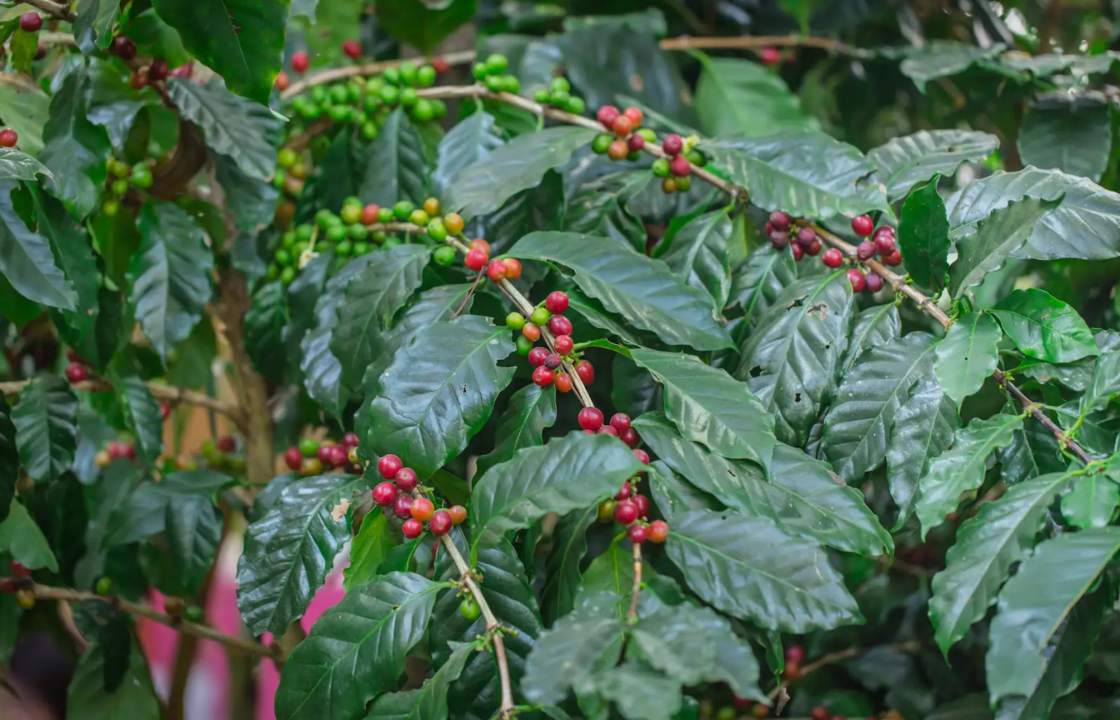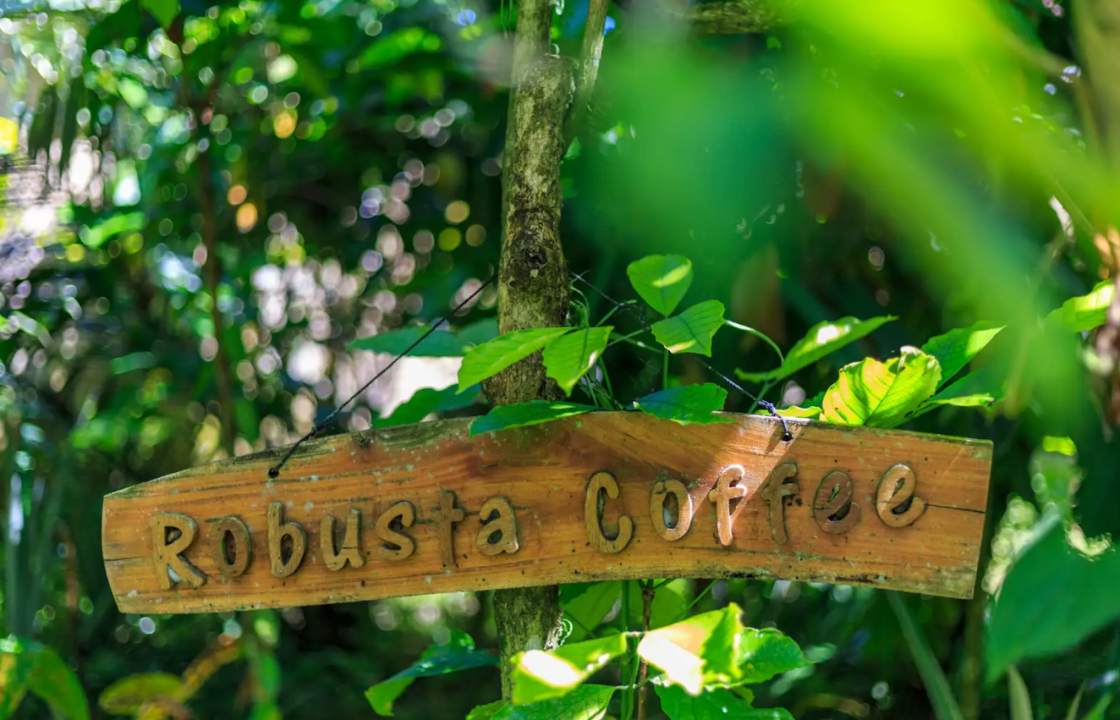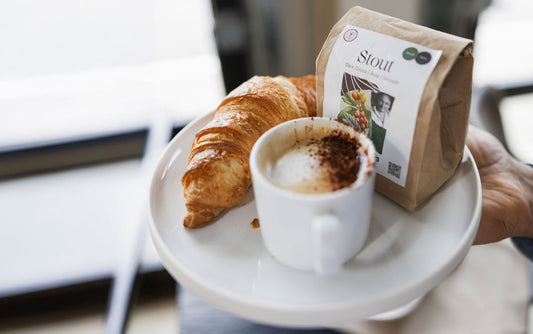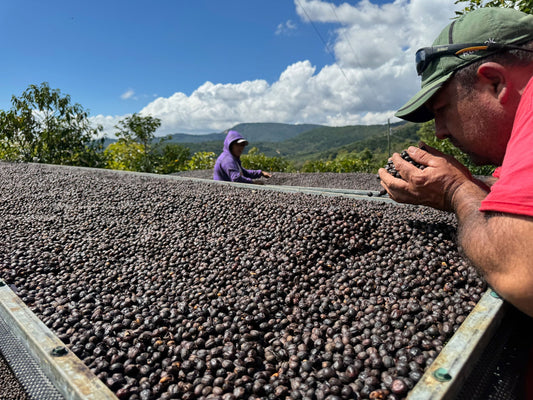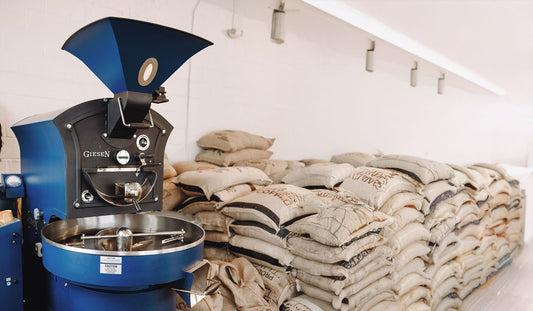Similar to the grapes used in winemaking, various coffee bean types influence the quality of the brew. Factors such as flavor, aroma, body, mouthfeel, acidity, sweetness, balance, and aftertaste are all shaped by the beans' chemical makeup, which is directly influenced by their terroir—environmental aspects including soil, climate, water, altitude, and topography.
Moreover, how the beans are cultivated, gathered, processed, and roasted increases the incredible bean variety available to coffee lovers. Each kind offers a glimpse into local customs, practices, and cultures.
For casual drinkers, coffee may seem uniform. In contrast, for dedicated coffee enthusiasts, grasping the distinctive characteristics of different coffee bean varieties enhances our ability to appreciate, connect with, and engage in the rich narratives behind each enjoyable sip. Understanding these nuances also aids in making informed choices when selecting beans!
Let's delve into the four most popular coffee bean types—their flavors, regions, production methods, and roasting processes.
The Four Main Coffee Beans
Most of the world’s coffee is produced from Arabica and Robusta types. These two coffee bean varieties are the primary sources of production and have played crucial roles in the sector for a long time. Nevertheless, there is an increasing fascination with Liberica and Excelsa. Farmers are experimenting with various coffee bean varieties to adapt to changing climates and new challenges. Increasing temperatures, pests, and erratic weather patterns are making it more difficult to cultivate crops using conventional methods.
At the same time, there is a shift in consumer preferences. People are interested in new flavors that go beyond what they are already familiar with. Liberica and Excelsa provide distinctive options. These coffee bean varieties present unexpected tastes that are capturing the interest of adventurous drinkers.
Biodiversity plays a vital role in the coffee production process, thus utilizing a mix of different coffee bean types helps protect against environmental risks. Some beans show greater tolerance to high temperatures, water scarcity, and disease, giving farmers better options as they adjust to changing environmental conditions.
While coffee production revolves around just a handful of varieties, there are many cultivars within these categories. Arabica alone has over 50 recognized cultivars, and Robusta has close to 50 as well. Counting landraces, hybrids, and experimental cultivars, the number grows even further. Each type brings its own flavor and character, though most coffee drinkers will encounter only a few in their lifetime.
For now, we’ll focus on the four primary coffee bean varieties: Arabica, Robusta, Liberica, and Excelsa. These types not only shape today’s coffee industry but also offer a glimpse into its future through its resilience and flavor diversity.
1. Arabica (Coffea arabica)

Arabica coffee comprises around 60% of global coffee production, approximately. Its intricate and varied flavors make it a favorite. Among the Arabica varieties, Typica is the most widely cultivated, with Caturra and Bourbon also valued for their sweetness and smooth taste. The Geisha variety is another highlight, renowned for its delicate floral and tea-like flavors, often achieving record prices at auctions.
Flavor Profile
Arabica coffee is typically smooth, mild, and slightly sweet, featuring tasting notes that span from caramel and chocolate to fruity or nutty undertones. In comparison to other coffee bean varieties, Arabica generally showcases low to medium acidity and a well-balanced body, thus appealing to diverse palates. It embodies the classic characteristics associated with an exceptional cup of coffee.
Region
Arabica coffee flourishes in areas with high altitudes and a cool, subtropical climate. Brazil is the largest producer of this coffee bean type globally, significantly influencing both the Arabica market and overall coffee production. Other notable producers of Arabica include Colombia, Guatemala, Ethiopia, and Kenya, with smaller yet meaningful contributions from Indonesia, India, Sumatra, and Sulawesi. Each origin imparts unique regional flavor characteristics. For instance, Ethiopian beans offer amazing floral and fruity notes, while Colombian coffee bean varieties are recognized for their bright acidity and overall balance.
Coffee Production
The optimal range for Arabica plants is at elevations of 1,200 to 2,000 meters, where lower temperatures delay maturation, leading to the creation of complex flavors. Nevertheless, these plants are delicate, needing precise soil conditions (specifically acidic with a pH of 6.0 to 6.5) and regular rainfall. They are also susceptible to illnesses like coffee leaf rust and environmental stressors, which can affect both the quantity and quality.
Because of these challenges, Arabica coffee production requires a lot of manual labor, as farmers invest significant time and effort in caring for the plants. The high prices Arabica fetches are due to its exceptional quality and the expensive cultivation process. In spite of the obstacles, farmers continue to cultivate it because of the robust consumer desire for top-quality beans.
Roasting
Arabica's balanced flavor profile makes it a highly adaptable coffee bean variety for roasting. Medium roasts are particularly popular, showcasing a pleasant balance of sweetness and acidity. Nonetheless, Arabica's gentle qualities also make great light roasts, which bring out its unique flavors depending on its origin. When Arabica is roasted to a darker profile, it gains more intense and complex flavors without developing bitterness or overpowering the palate.
2. Robusta (Coffea canephora)

Robusta variety contributes roughly 40% to the global coffee production. It’s particularly favored in espresso blends and instant coffee because of its robust and intense character. While Arabica coffee tends to receive most of the attention, Robusta is somewhat vital to coffee culture. It is resistant and high in caffeine, which provides a very distinct drinking experience. Some prominent varieties of Robusta coffee beans include Conilon and Nganda, alongside hybrids like Robusta 2, which combines Robusta’s strength with the smoother profile of Arabica.
Flavor Profile
Robusta coffee is characterized by bold, bitter, and earthy flavors. Its increased caffeine levels and reduced sugar content lead to a strong, sharp taste. Typical flavor notes encompass wood, nuts, dark chocolate, and subtle hints of caramel or whiskey. Occasionally, certain beans might have fruity or even rubbery nuances. Though its flavor can be quite powerful, many coffee drinkers appreciate Robusta’s intensity—especially in espresso or dark blends.
Region
Vietnam is the top Robusta producer globally and ships out 90% of its coffee in the form of Robusta beans. Indonesia, Uganda, India, Brazil, Malaysia, and Thailand are among the other main producers. In contrast to Arabica, which thrives at higher elevations, Robusta grows best in low, hot, and damp conditions. Its strength allows it to thrive in areas where different types of coffee beans might face difficulties.
Coffee Production
Robusta plants display greater resilience compared to Arabica. They grow more rapidly, yield more coffee, and effectively withstand pests, diseases, and high temperatures. These traits are critical for farmers coping with climate change. Since it requires less intensive care, Robusta ensures consistent coffee production even under difficult circumstances.
Roasting
Robusta is well-suited to medium to dark roasting levels. A medium-dark roast accentuates its nutty and chocolate flavors, while darker roasts reveal smoky, powerful notes. It is frequently blended with Arabica to achieve a balanced flavor and create a rich crema—the dense, silky foam valued in espresso shots. For those who prefer their coffee bold and strong, Robusta is an excellent option.
3. Liberica (Coffea liberica)

Despite Arabica and Robusta being the main players in the worldwide coffee industry, Liberica only constitutes a small fraction of coffee production, making it a unique and scarce discovery. Its unique taste and capacity to flourish in challenging environments have gained it a loyal fan base, particularly in Southeast Asia.
Flavor Profile
Liberica coffee provides a strong and intricate taste that differs from what you'll taste in Arabica or Robusta. It is famous for its smoky, woody, and nutty flavors, sometimes with a touch of dark chocolate. The subtle floral and spicy undertones intertwined in its deep, rich profile make Liberica stand out. Some people say the taste is strong and unique, making it popular for cold brews and mixes, enhancing their richness and personality.
The beans' varying, asymmetrical size also adds to the coffee's unexpected flavor development—sometimes fruity and flowery, other times earthy and smoky. Liberica provides a unique sensory experience for daring coffee enthusiasts seeking something different from the typical Arabica-Robusta options.
Region
Liberica beans originate from Liberia in West Africa—hence the name. Today, however, the coffee bean variety thrives primarily in Southeast Asia, where it plays an essential role in local coffee culture. The Philippines produces about 70% of its coffee from Liberica, while Malaysia relies on it for 90% of its coffee production. You’ll also find smaller amounts grown in Indonesia and India, though it remains a niche crop worldwide.
Coffee Production
Liberica has experienced a resurgence in recent years as climate challenges push farmers to explore more resilient coffee bean varieties. It can grow where other coffee bean types—especially Arabica—fail to thrive. Liberica trees are tall giants, reaching heights of up to 65 feet, which makes harvesting a challenge. However, the tradeoff is worth it; the plants are naturally resistant to pests, drought, and disease, and they perform well in low-altitude regions that are too hot or dry for other varieties.
Because of its hardy nature, Liberica is becoming an important crop in areas grappling with changing weather patterns. Its adaptability ensures that farmers can maintain production even as the global climate shifts—a critical factor for the future of coffee.
Roasting
Liberica’s high sugar content and complex amino acid profile make it well-suited to light roasts. Light roasting highlights the bean’s bright, fruity notes while keeping the floral undertones intact. However, achieving the perfect roast requires patience and precision. The beans must be slowly eased into the Maillard phase, allowing the flavors to develop fully without burning away their delicate qualities.
Roasters working with Liberica often explore longer roast curves to balance the coffee’s floral sweetness with its heavier, woody base. As the roast darkens, Liberica shifts toward chocolate and caramel flavors, gaining richness without becoming bitter.
4. Excelsa (Coffea excelsa)

Although technically part of the Liberica family, Excelsa has a unique personality that elevates it from the rest, resulting in many coffee experts considering it a separate bean type altogether. Famous for its divisive, complex taste profile, Excelsa provides a sensory experience that is far from ordinary.
Flavor Profile
Describing Excelsa’s flavor is no easy feat—it’s often called mysterious or complex. At first sip, you might notice a tart, fruity brightness, followed by deeper earthy and woody notes. It’s a coffee that feels both light and dark at the same time. Expect hints of berries, light citrus, and sometimes even a touch of smoke or spice. Some have compared the drinking experience to sipping Scotch whisky, as it offers evolving layers with each sip. While these distinct flavors can divide opinions, Excelsa has a devoted following among those who appreciate bold, unconventional coffees.
Region
Excelsa beans thrive mainly in Southeast Asia, particularly in countries like the Philippines, Vietnam, and Malaysia. You’ll also find smaller-scale cultivation in India, Uganda, and Chad. Much like its relative, Liberica, Excelsa performs well in low-altitude, tropical climates, and its ability to withstand environmental stress makes it a valuable crop for regions dealing with climate challenges.
In the Philippines, Excelsa plays a vital role in local blends, adding depth and uniqueness to native coffee traditions. As climate unpredictability reshapes the global coffee landscape, hardy coffee bean varieties like Excelsa are gaining more attention from farmers looking for alternatives to the more delicate Arabica.
Coffee Production
Excelsa is appreciated not only for its flavor complexity but also for its resilience. It thrives in conditions that might be too harsh for other coffee bean types, such as extreme heat or inconsistent rainfall. This makes it especially useful as farmers adapt to climate change. Its tough nature and resistance to pests and diseases make it easier to grow, though its low yields mean it’s still relatively rare on the global market.
However, growing Excelsa isn’t without its challenges. The trees are large and tall, similar to other Liberica plants, which complicates the harvesting process. Many farms must use a mix of hand-picking and creative pruning techniques to keep the trees manageable while ensuring optimal cherry ripeness.
Roasting
Excelsa’s unique composition makes it tricky to roast. Its dense mucilage and fewer soluble solids mean that it behaves differently during roasting, often requiring longer roast times and higher temperatures to unlock its flavors. Light roasts will emphasize its bright acidity and fruity, berry-like notes, while darker roasts bring out its chocolaty, creamy undertones—but without the heaviness of Robusta or Arabica.
Given its multi-dimensional profile, roasters must be patient and precise, carefully managing the roast to avoid either underdevelopment or over-roasting. The key lies in hitting the right balance, teasing out both the tart brightness and deeper notes without burning away its delicate flavors. This makes it a favorite of experimental roasters looking to create signature single-origin offerings that stand out.

Shop Handpicked Coffee
Now that you are familiar with various coffee types, let's explore coffee culture further by looking into our specialty coffee beans. We are excited to offer a wide range of coffee bean varieties sourced globally. While each single-origin coffee we provide has its distinct qualities, they all adhere to our strict criteria for excellence and sustainability.
Whether you're trying out different types of coffee beans or searching for a higher-quality version of your regular choice, our farm-to-cup coffee is sure to be the best part of your day. Browse our selection now to discover your next favorite coffee choice!

